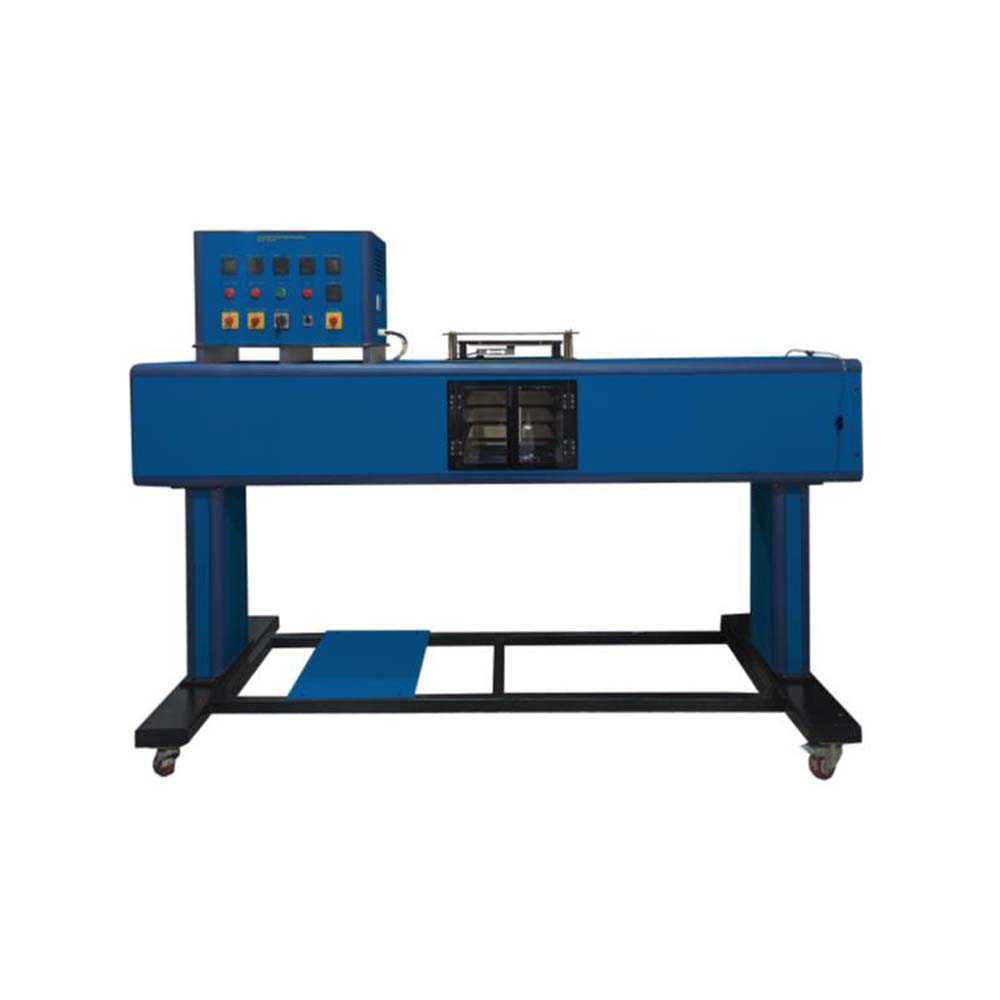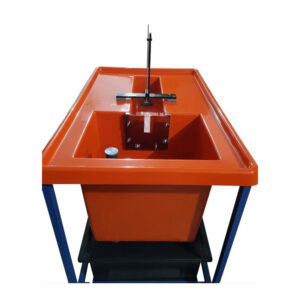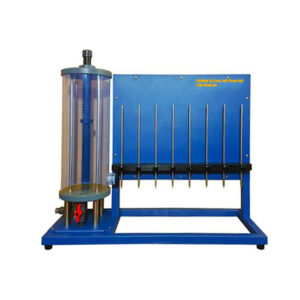This unit explains the basic tray drying by Hot Air. The apparatus consists of a rectangular duct. Air is drawn in to the duct by an axial flow fan at the left end of the duct. Fan speed is adjustable. A bank of electric heater after the fan raises air temperature. A rack of trays is suspended from a balance above the duct. Temperatures and humidity before and after the drying trays are measured. Convection dryers are often used for drying solids in food technology. The Tray Dryer can be used to investigate and demonstrate the process of convection drying of granular solids. Four corrosion resistant removable trays are available for drying the solid. They are placed in a drying channel. The trays containing the solid to be dried are exposed to an air flow in the channel. The air flow heats the solid and also removes any moisture released. Air velocity can be adjusted by the speed of a fan. An adjustable heater allows the heating of the air. The transparent door in the drying channel allows the drying process to be observed. A digital balance can be used to follow the changes in weight of the solid due to evaporation or vaporisation of moisture during operation. The air temperature and the relative humidity of the air are measured and digitally displayed by a single combined temperature and humidity sensor before and after the air flow passes over the solid. A further sensor measures the air velocity. The relevant measured parameters (changes in weight, humidity, temperature, air velocity) can be transferred directly to a PC, where they can then be further processed (optional).The well-structured instructional material sets out the fundamentals and provides a step-by-step guide through the experiments.




